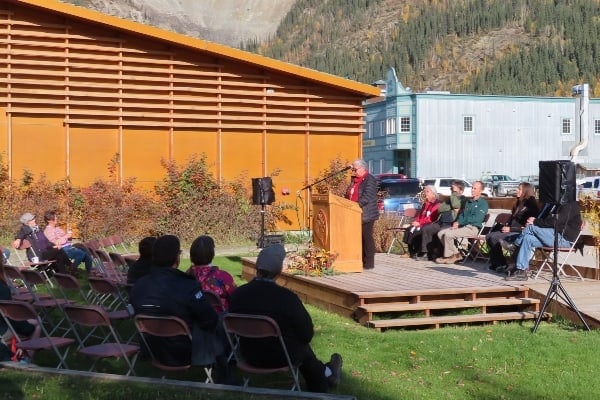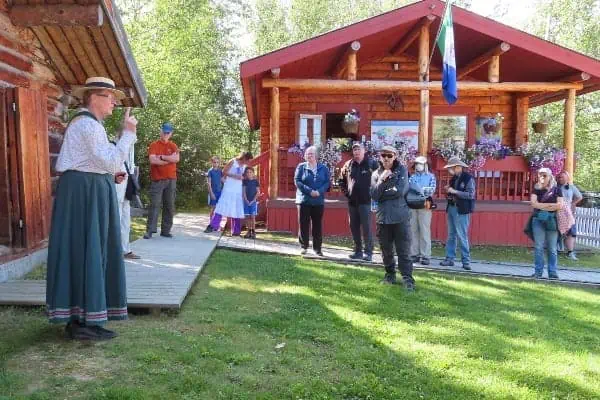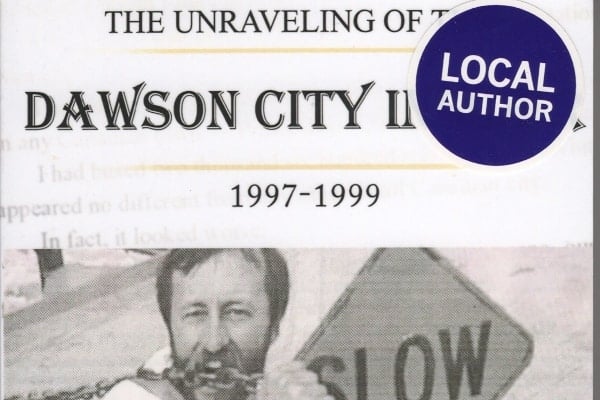When you think about historic photos of the Klondike, most of what comes to mind is from the Gold Rush years or not long after.
The Parks Canada theme for the area is, after all, from the Gold Rush to about 1920, with the heyday being the years when George and Martha Black held court at the Commissioner’s Residence.
Most of the photo collections on the shelves of our bookstores tend to focus on this period as well.
Sometimes you’d think that Dawson went straight from Gold Rush grandeur to the town it is today without any stops in between.
The display that opened at the Dawson City Museum in mid-May is an exception to that general rule.
James Quong—Alberta-born, Saskatchewan-raised and educated—was an engineer with the US Public Road Administration during the building of the Alaska Highway.
An artist as well as an engineer, he began his stint by drafting designs for temporary timber bridges, but eventually ended up assisting with, or designing, all of the 134 permanent bridges along the highway.
During that same time period, he began to develop an interest in photography, something that stayed with him for the rest of his life.
He hadn’t intended to spend a long time in the Yukon, had promised his new bride that they wouldn’t when they married in 1944, but the couple spent the next 37 years living in Whitehorse.
James transferred over to the Canadian Army’s Northwest Highway Service along with the highway in 1946 and eventually to the federal Department of Public Works in 1964. Bridges along the Dempster Highway and Skagway Roads also came from his drafting table.
In the 1950s and 1960s, Quong made a number of trips to Dawson City. It was during the end of an era. The sternwheelers had ceased to ply the rivers; the capital city designation had moved to Whitehorse; the Yukon Consolidated Gold Corp. would soon be winding down operations and only the fledgling Klondike Visitors Association was giving any serious thought to a Klondike future in tourism.
The town was rapidly approaching that state of shabby gentility that the National Film Board captured so well in the Pierre Berton-narrated film, City of Gold, in 1957. (Don’t take my word for it; you can watch it online at www.nfb.ca/film/city_of_gold. It’s a classic.)
The pictures in the Quong exhibit at the Dawson City Museum (on display until Aug. 11) capture that era, and also a number of buildings which no longer exist here: the Occidental Hotel, the Royal Alexandria, the original Yukon Order of Pioneers Hall, and both the Dawson Public School (1953) and the Dawson Elementary High School (1961), which replaced the original school after it burned, and has since been replaced itself by Robert Service School.
There are several roadhouses depicted, along with and some unidentified industrial style buildings that are no longer standing, as well as some familiar streetscapes containing structures that are long gone.
One photo—a shot of a slightly tipsy Old Post Office at King and Third—serves as a reminder of what was happening to the town in that period. It was tilting then, and would have been the worse for wear or demolished by now, if not for the Parks’ restoration projects, which began in the 1970s and continued through the ’80s.
The Quong exhibit is showing in the Museum’s audio-visual room.
After 32 years teaching in rural Yukon schools, Dan Davidson retired from that profession but continues writing about life in Dawson City.




